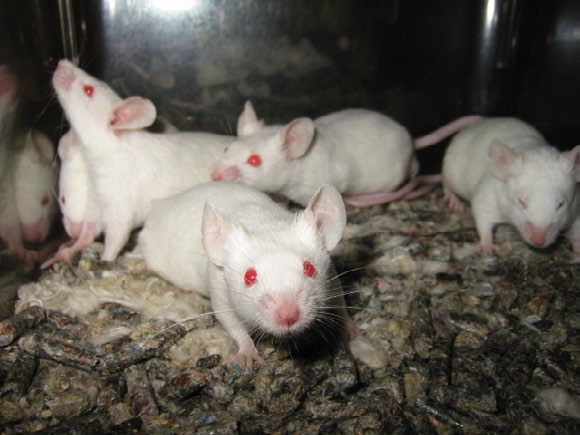Stress as an Indicator of Divine Design
In an ad for the Heart Institute that bears his name, Tommy Lasorda, former manager of the Los Angeles Dodgers, says, “I don’t get heart attacks; I give them.” As manager of a Major League Baseball team, he did what he could to stress the hearts of competing managers. He also realized it was important for him to
stress his own athletes to some degree so that they could become better athletes. And by making his players better, he reasoned, he would cause even greater stress and anxiety for competing managers.
Too much stress can cause serious damage, even death. Yet Lasorda spoke of something that ecologists and chemists have only recently learned to appreciate more fully. Every life-form needs some level of stress, but for maximum benefit the stress must be carefully fine-tuned. In the 1880s, a German pharmacologist first noted that tiny doses of disinfectants (stressors) stimulated the growth of yeast. Ignoring his notations about the detrimental effects of high dosages, some homeopathic practitioners went wild. They began over prescribing stressors, such as heavy metal tablets or liquids and skin irritants, touting their supposed benefits. This practice, which to some extent continues even today, resulted in a serious loss of credibility for those investigating and advocating the potential benefits of stress. Not until the last few years, when scientists began to measure accurately the nonlinear pattern of organisms’ response to stressors, did the discipline of hormesis—the study of the benefits (and detriments) of varying degrees and kinds of measurable stress—regain momentum among scientists.
Over the past few years, hormeticians have uncovered increasing evidence that certain stress-inducing substances and conditions available in Earth’s environment can and do produce a variety of beneficial responses—if available at appropriate levels.1
These same substances and conditions prove toxic at higher levels, and the toxicity typically rises exponentially with increased exposure levels. At some point, these stressors can prove lethal.
Hormeticians have also found that for many species of life, stressors yield benefits twice, both at the time of initial exposure and also later in life, sometimes much later. In almost all cases, the stressors produce increased fitness for survival. The particular fitness benefits include enhanced acclimation to conditions in the organism’s environment and what hormeticians term plasticity—the ability to adapt to a wider range of environmental conditions.
An example of acclimation is what happens to mountain climbers as they gradually ascend from altitudes of 10,000 to 26,000 feet. The stress of decreasing oxygen availability in the atmosphere stimulates the body to increase the density of red blood cells in the blood stream. This increased density delivers oxygen more efficiently to the climbers’ muscles. An example of plasticity may be seen in the development of the human immune response system. The stress of exposure to viruses, bacteria, dust, and a wide range of foods in a person’s early years can result in greater resistance to allergies and asthmatic reactions.
To date hormeticians have identified over a thousand different chemical and environmental stressors that yield one or more advantages to one or more species of life. Species for which scientists have found proven benefits from stressors include plants, bacteria, fungi, insects, fish, birds, and mammals, including humans.2
The stressors fall into four broad categories:
1. Naturally occurring (potentially toxic) elements and compounds
2. Naturally existing (potentially lethal) environmental conditions, including radiation and pollution
3. Various organisms and viruses
4. Physical activities that temporarily deprive, strain, or damage
The benefits of these stressors fall into six broad categories:
1. Enhanced longevity
2. Enhanced growth or biomass
3. Enhanced reproduction
4. Enhanced antioxidant defenses
5. Enhanced immunity or health
6. Greater strength or endurance
For many species, including humans, the benefit that an individual gains from a particular stressor is highly dependent on when, during development, exposure to the stressor occurs. Typically, the greatest benefit derives from exposure during the earlier stages of the developmental process. Occasionally, the benefit is gender dependent, as was recently demonstrated among fruit flies.3
The finding that exposure to a stressor during early development can bring about lifelong benefits led researchers to explore possible links between the stressors and the functions of certain genes. These researchers found that in many cases the stressors changed the expression of genes underlying certain physiological response pathways.4 For example, stressors impacted gene expression governing hormone response, heatshock proteins, and antioxidant enzymes.
The ongoing study of hormesis brings into focus four distinct manifestations of fine-tuning for life,
human life in particular:
1. Earth’s surface and crust contain an abundance and diversity of stressors that impact widely diverse species, ultimately benefiting (with appropriate level and timing of exposure) the entire range of species.
2. These stressors have remained at high enough levels and for long enough to benefit the greatest number of species, including advanced animals and human beings.
3. These stressors remain at low enough levels to cause minimum damage to Earth’s life-forms—minimum in the context of the existing laws of physics.
4. The DNA structure of Earth’s life-forms allows genes to respond to stressors in beneficial ways.
In each of these four areas lies the opportunity for hormeticians to discover and measure evidence for design—its extent, complexity, and interconnectedness. Hormesis may also contribute to resolving the debate over which influence—genetics or environment—primarily determines behavior. Hormeticians can confirm our intuition that behavior emanates from a complex and still only vaguely understood interdependence between the two. Ongoing research may well provide scientific confirmation for what the Bible says about morals and ethics. Already it adds weight to the case for divine design.
Figure 1: A Little Bit of Stress Makes for Healthier Mice
Experiments done on laboratory mice demonstrate that exposure to certain kinds and levels of stress during early development can produce healthier adults with longer life spans.
Endnotes
- David Constantini, Neil B. Metcalfe, and Pat Monaghan, “Ecological Processes in a Hormetic Framework,” Ecology Letters 13 (November 2010): 1435–47.
- Edward J. Calabrese and Robyn Blain, “The Occurrence of Hormetic Dose Responses in the Toxicological Literature, the Hormesis Database: an Overview,” Toxicology and Applied Pharmacology 202, no. 3 (February 1, 2005): 289–301.
- Éric Le Bourg, Étienne Toffin, and Antoine Massé, “Male Drosophila melanogaster Flies Exposed to Hypergravity at Young Age Are Protected Against a Non-Lethal Heat Shock at Middle Age But Not Against Behavioral Impairments Due to this Shock,” Biogerontology 5, no. 6 (November 2004): 431–43.
- Calabrese and Blain, 289–301; Alexander M. Vaiserman, “Hormesis, Adaptive Epigenetic Reorganization, and Implications for Human Health and Longevity,” Dose-Response 8, no. 1 (2010): 16–21; Suresh I. S. Rattan, “Hormesis in Aging,” Ageing Research Reviews 7, no. 1 (January 2008): 63–78.







